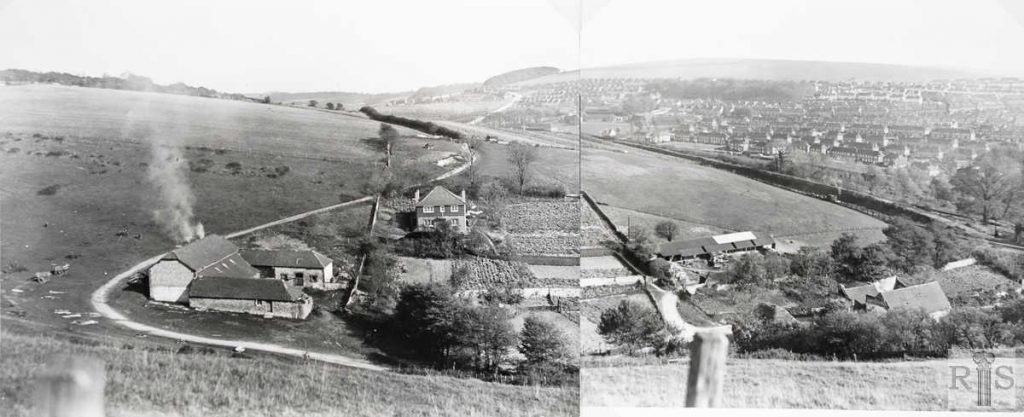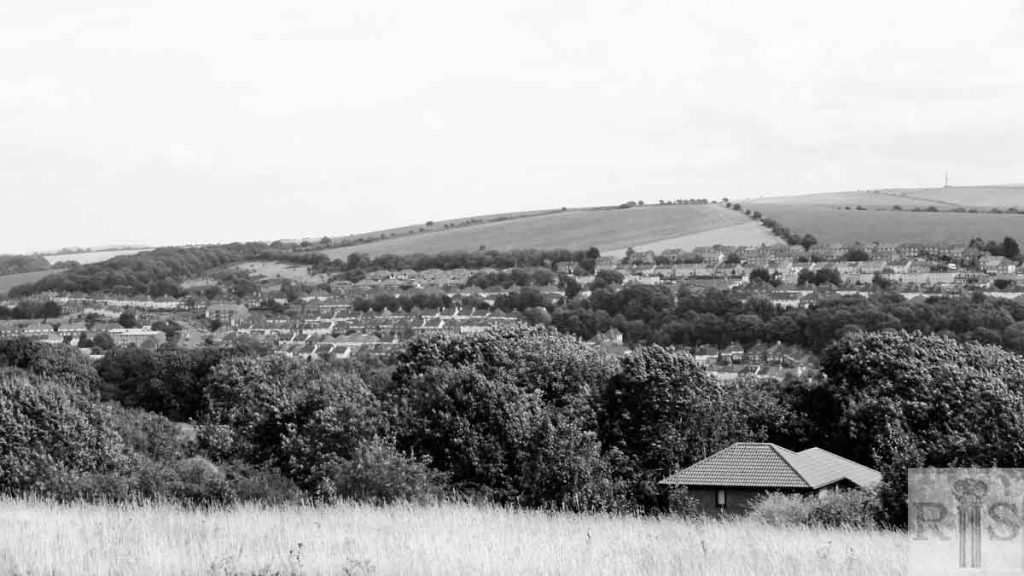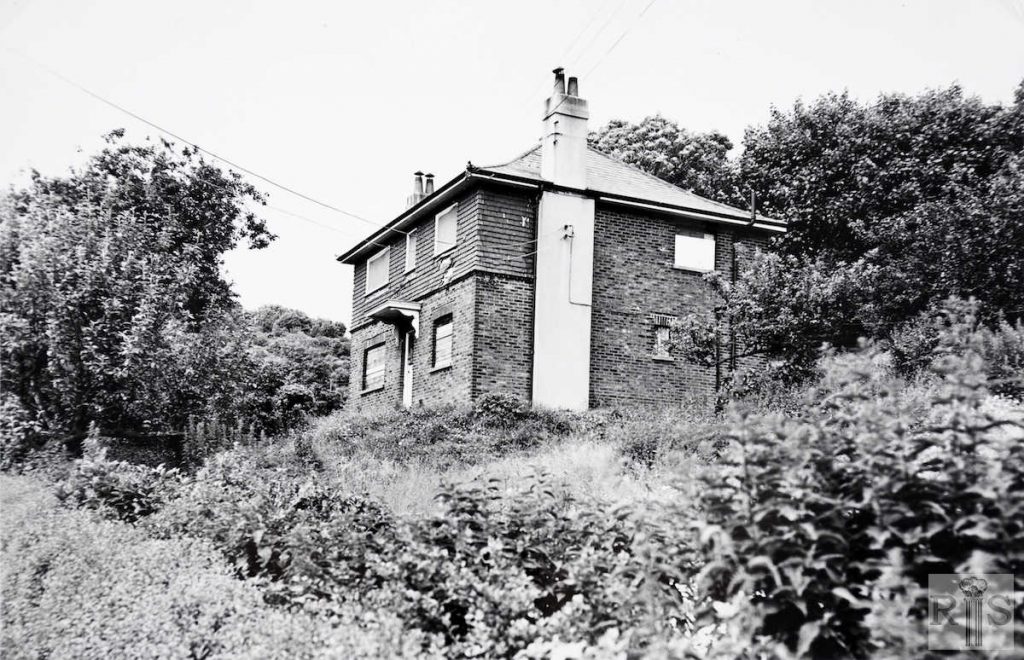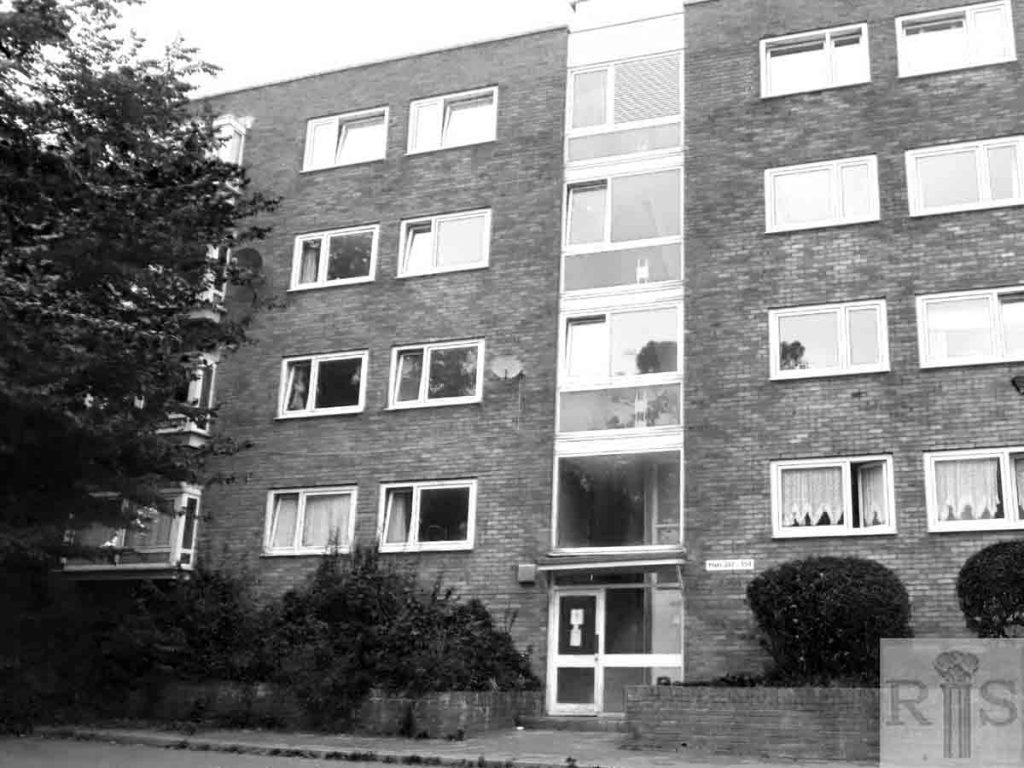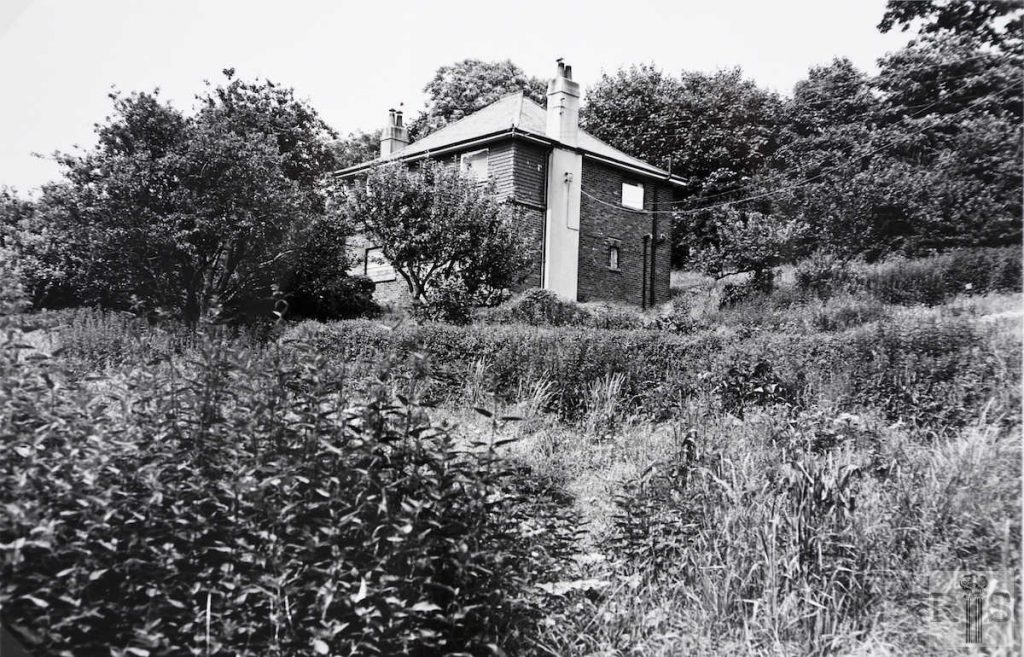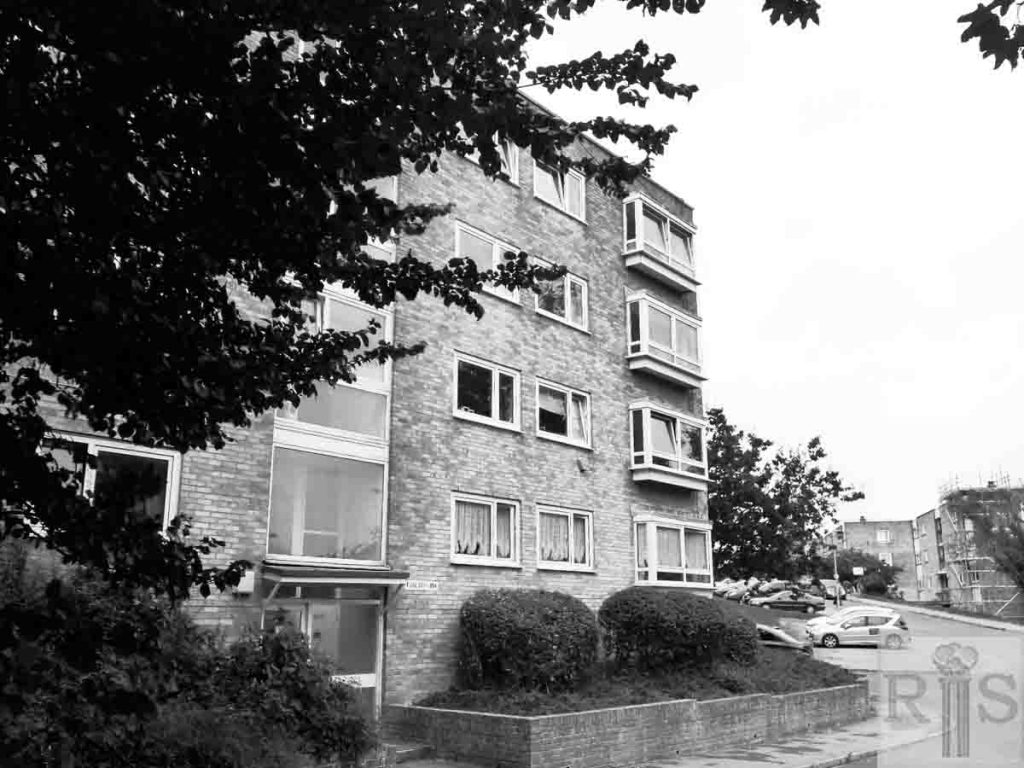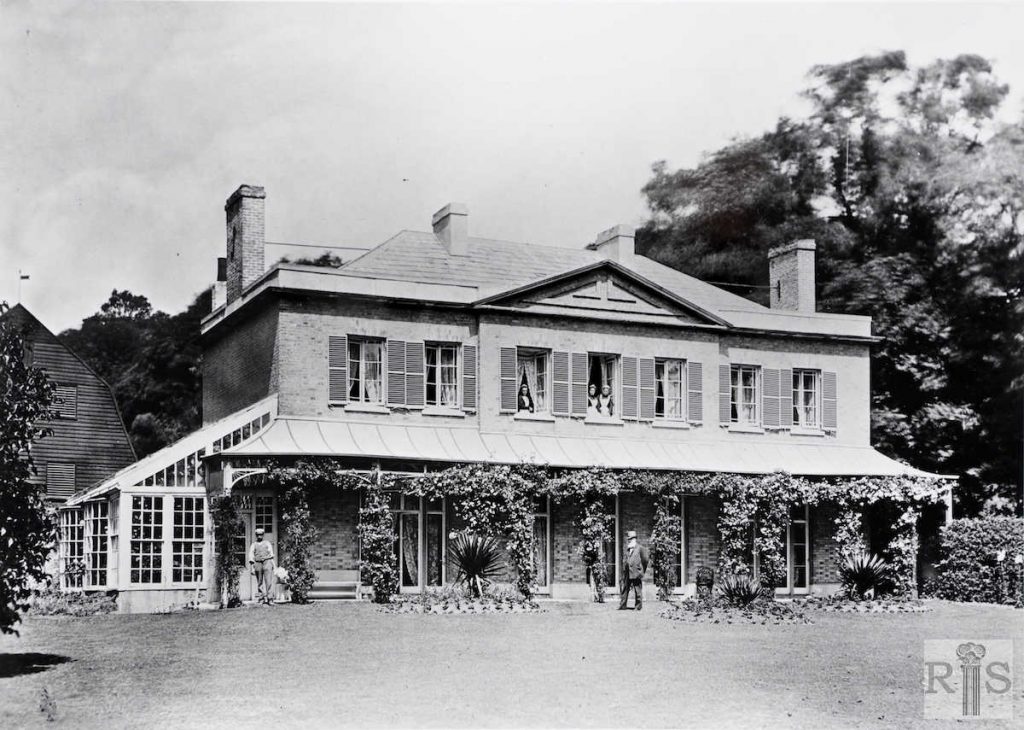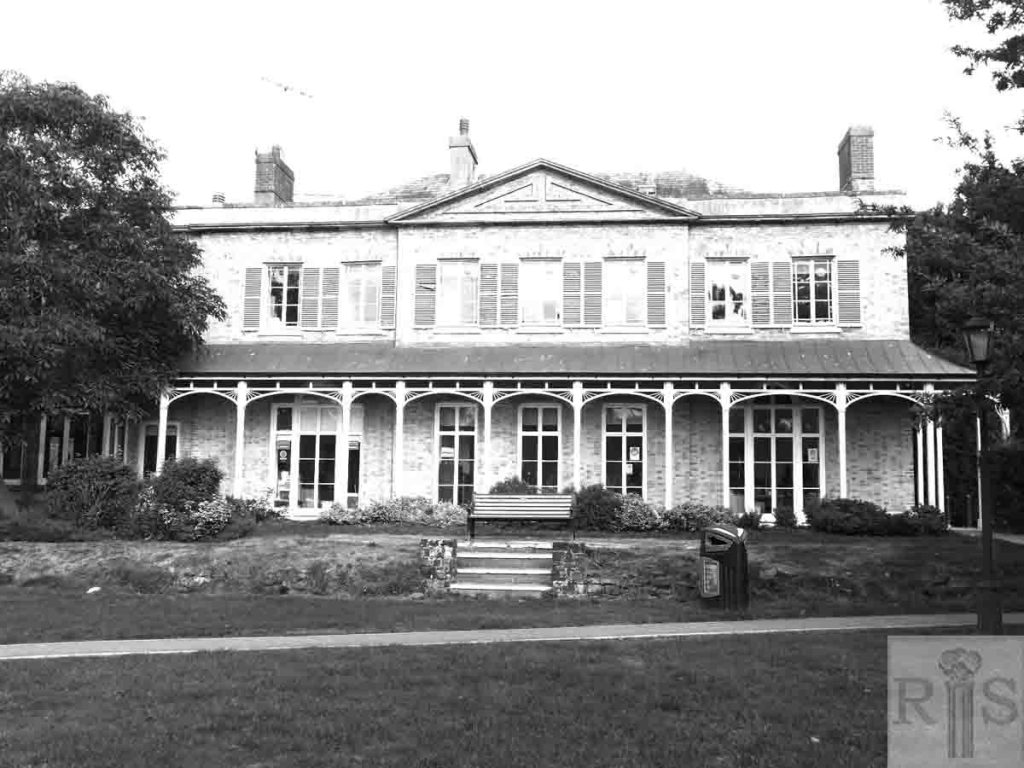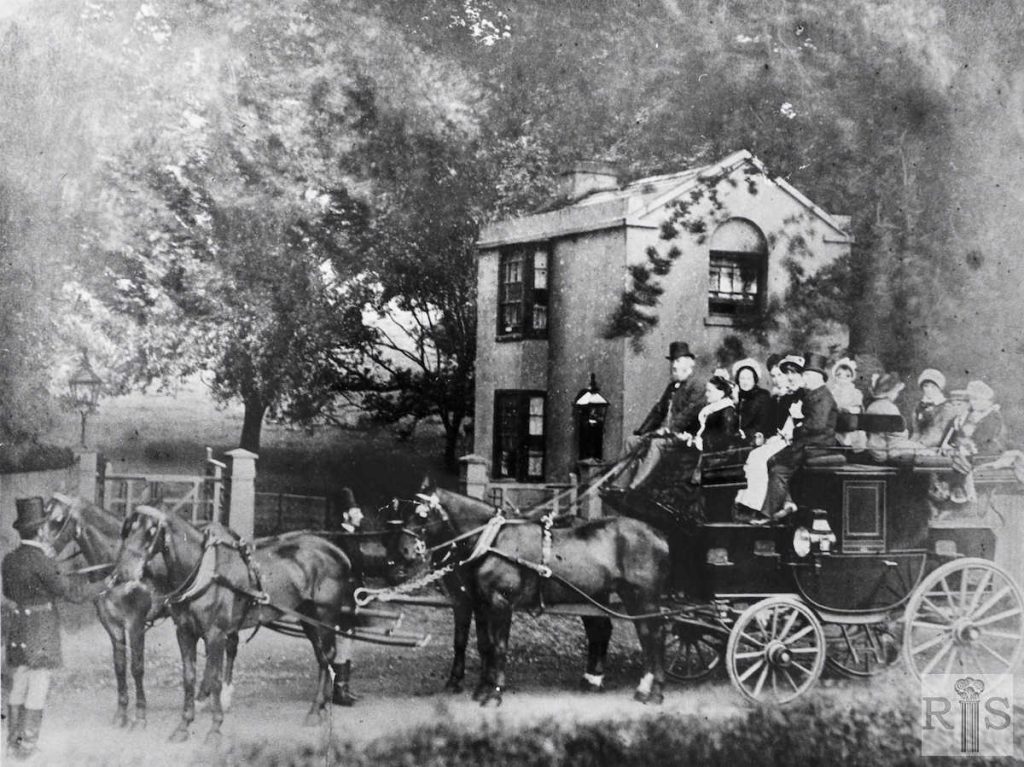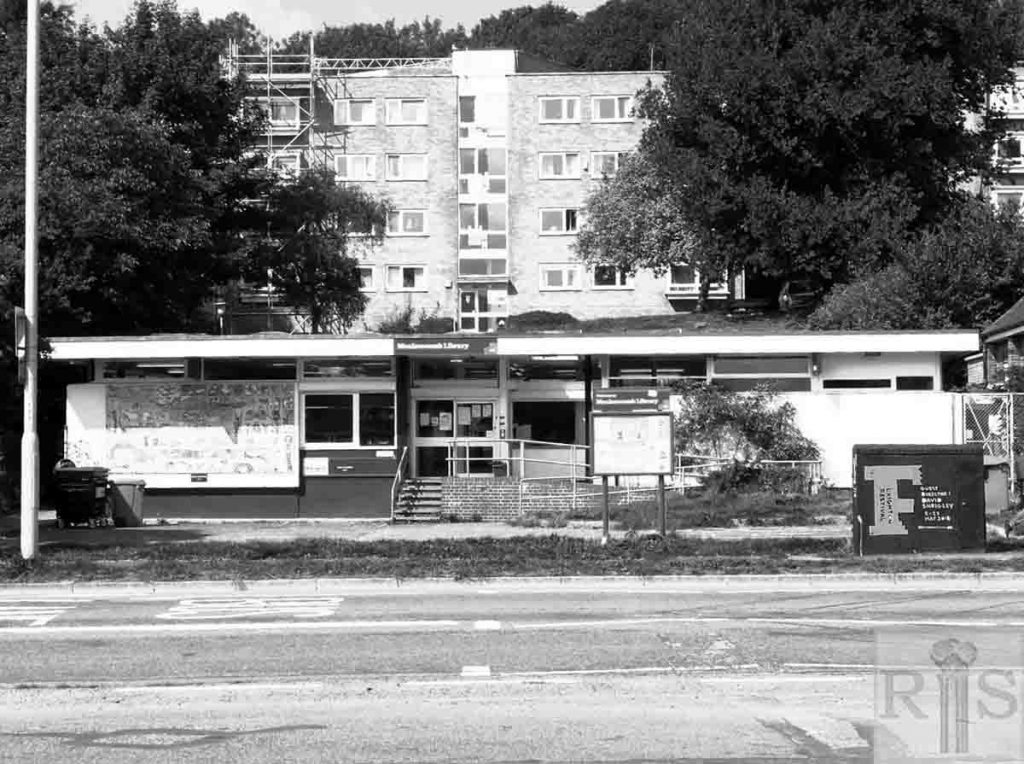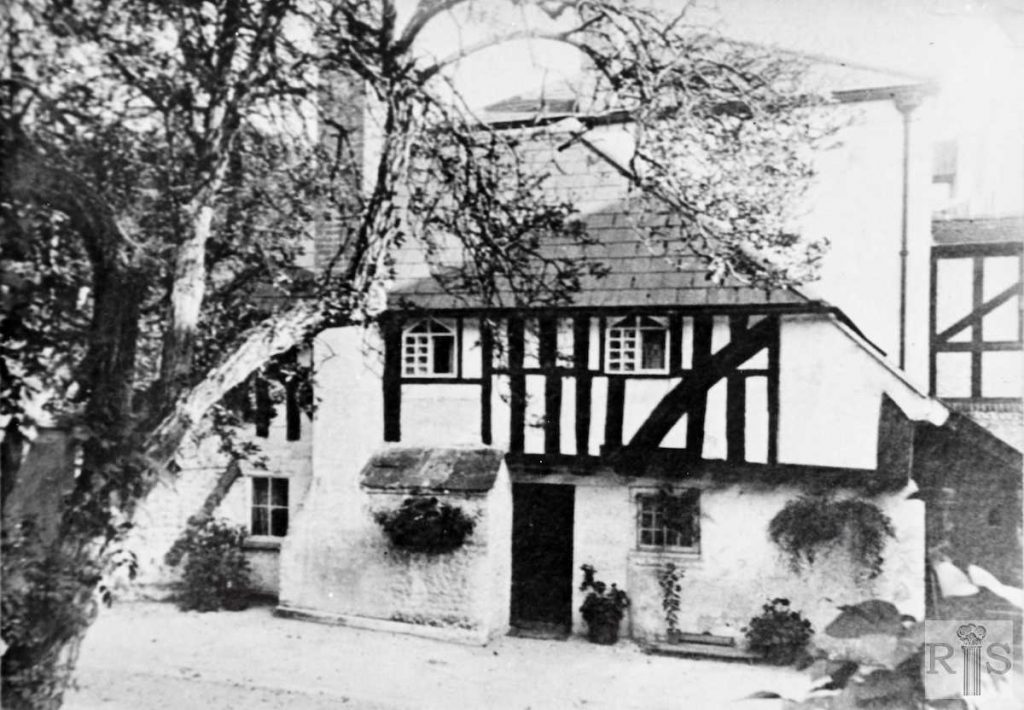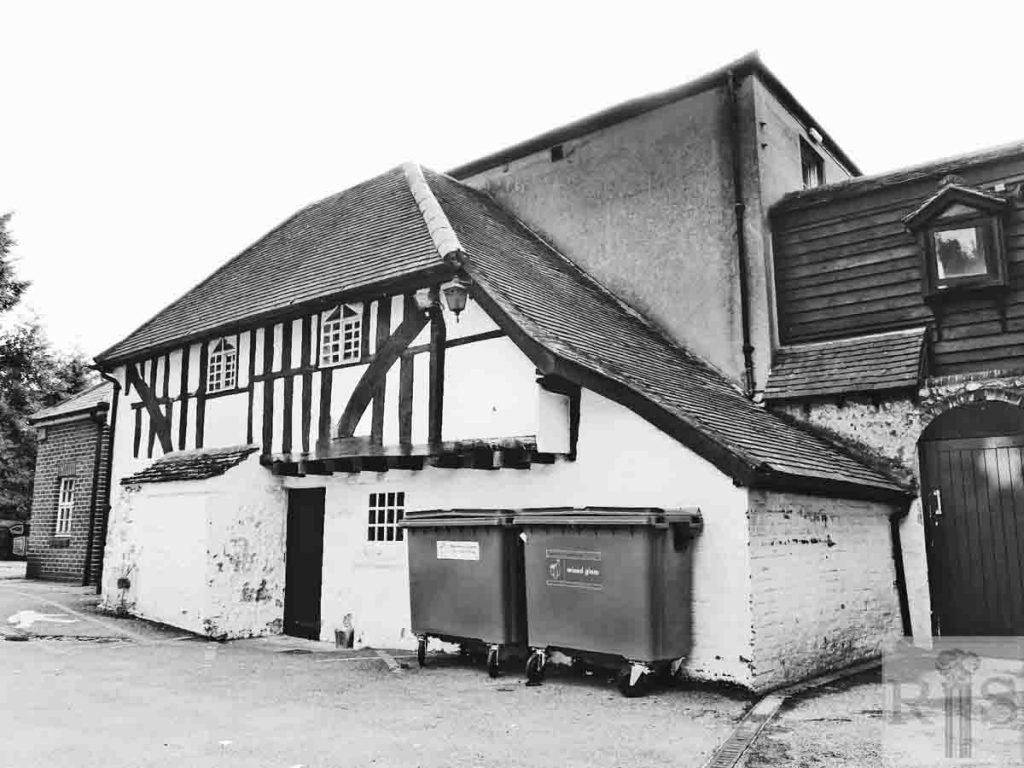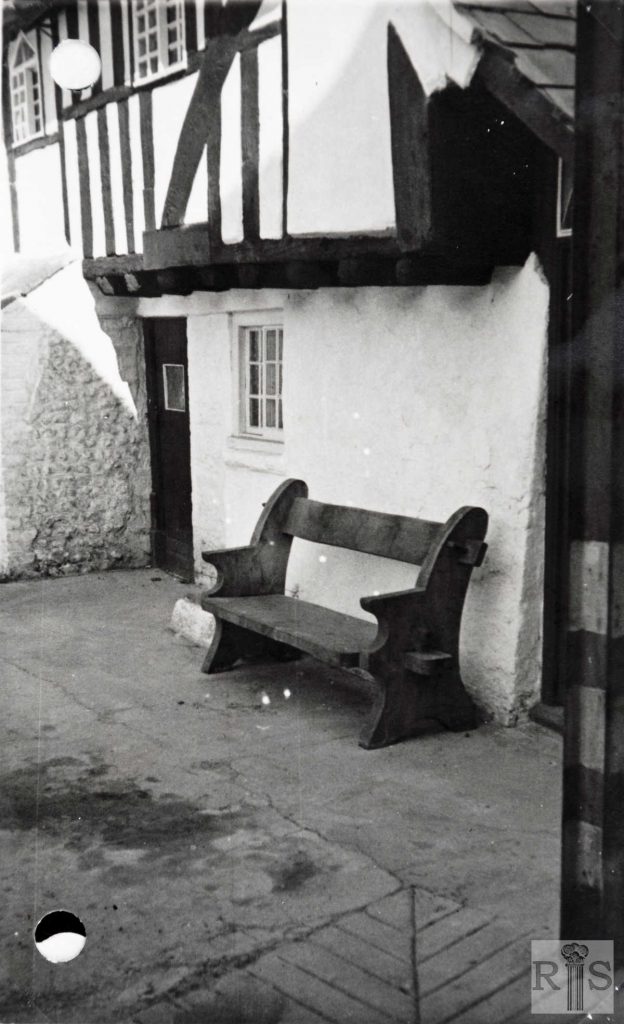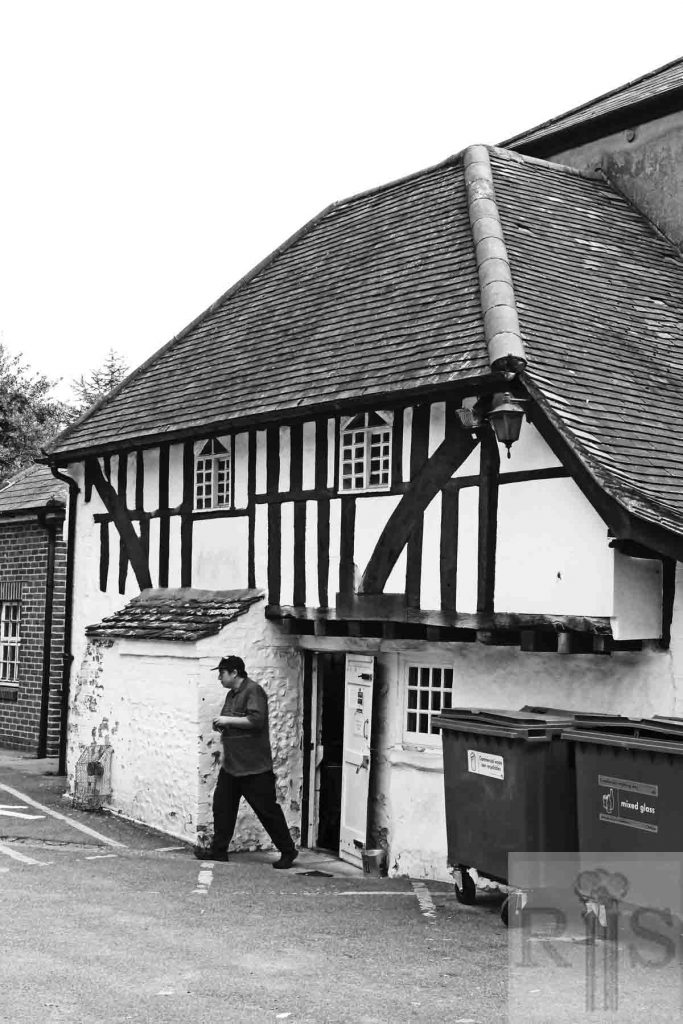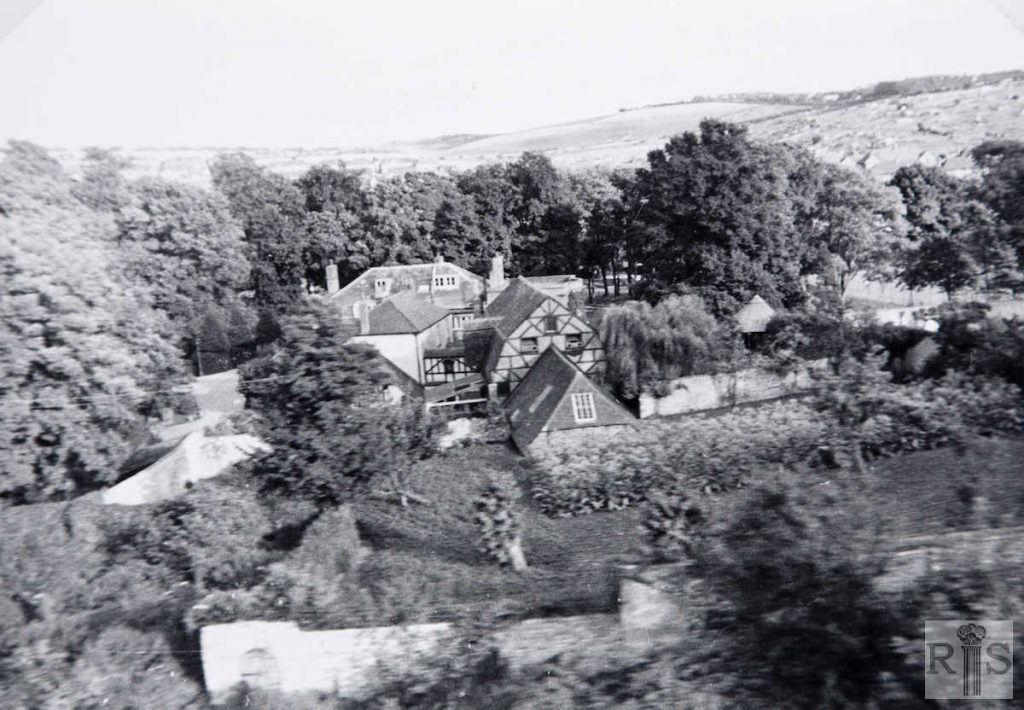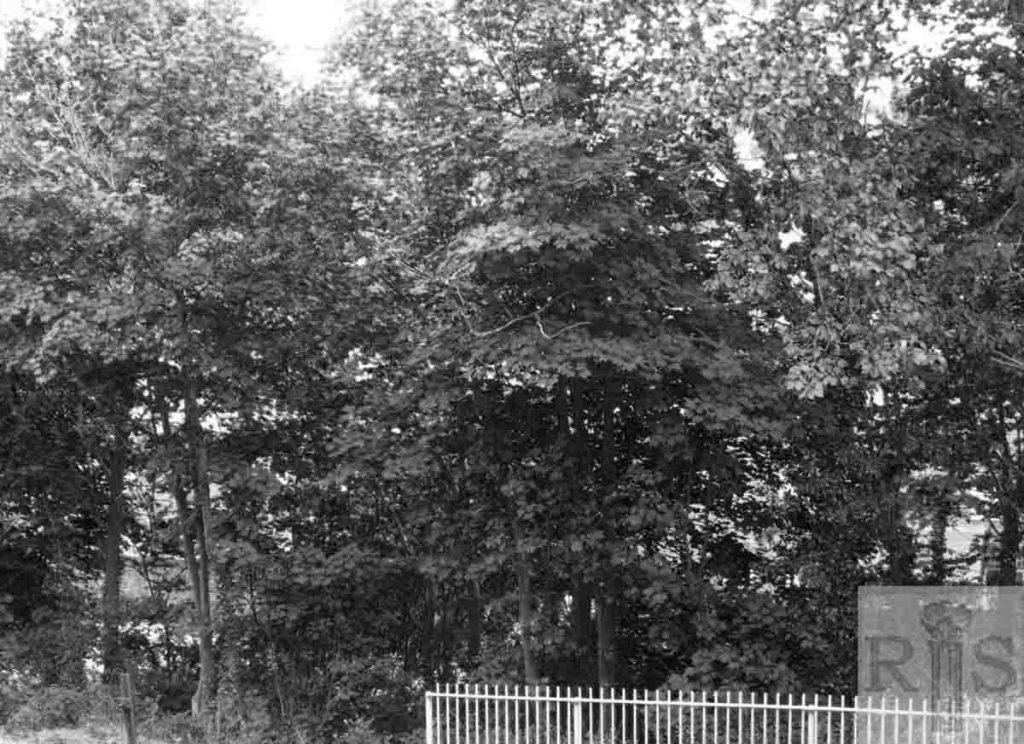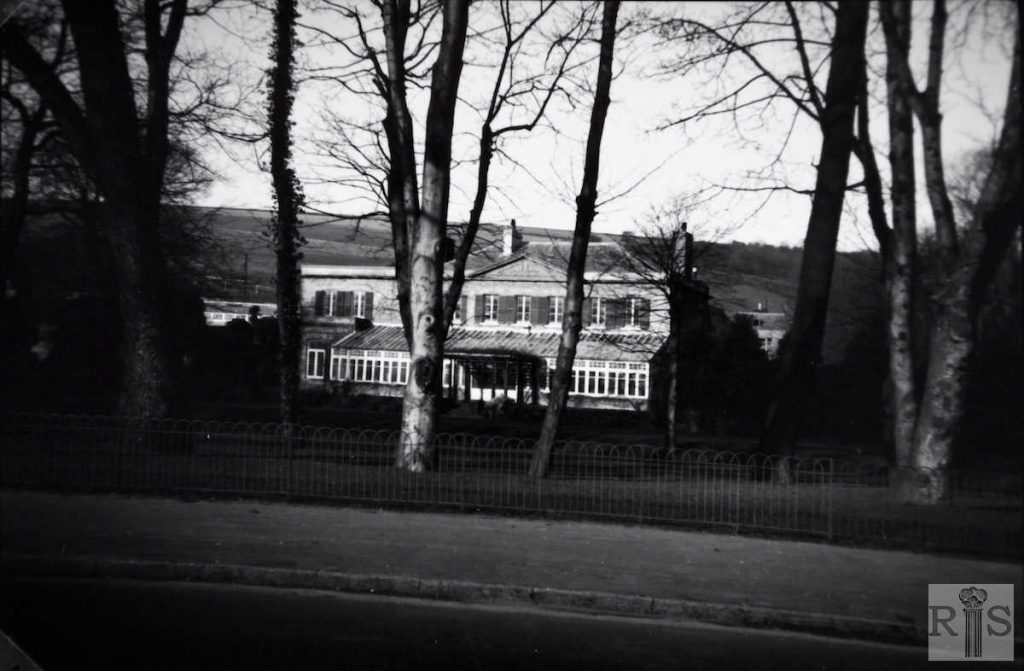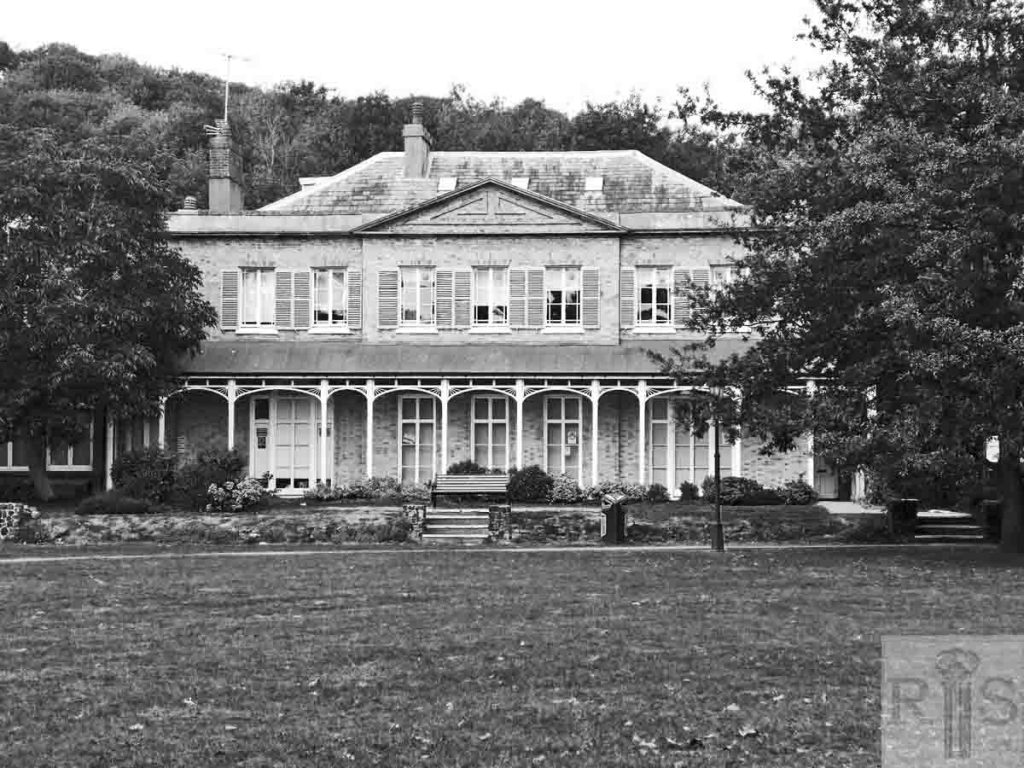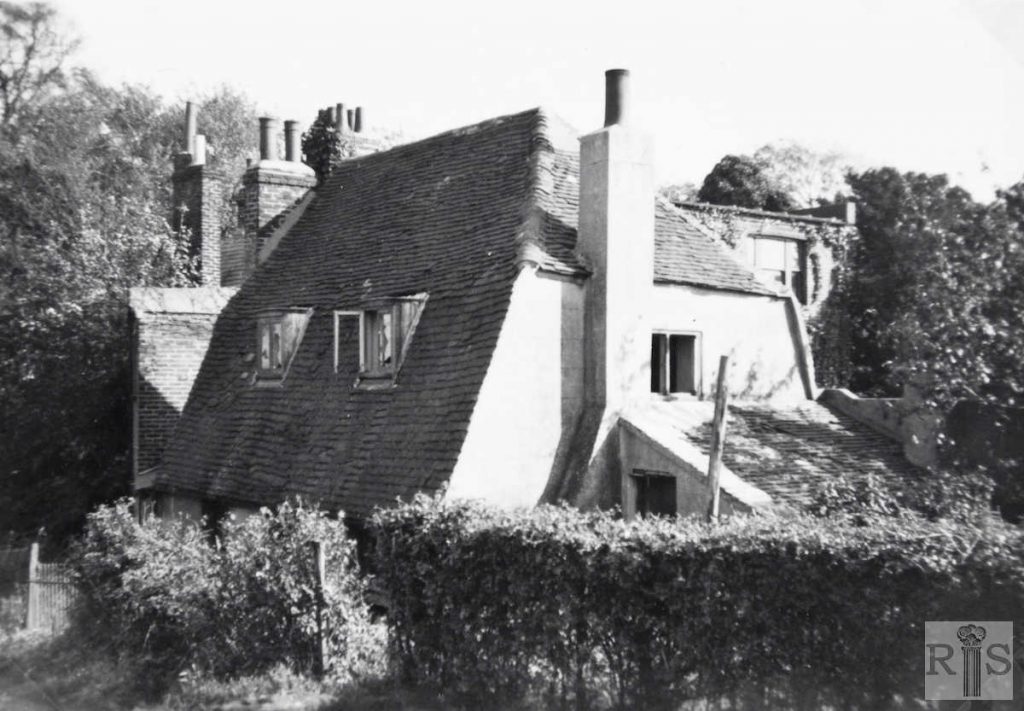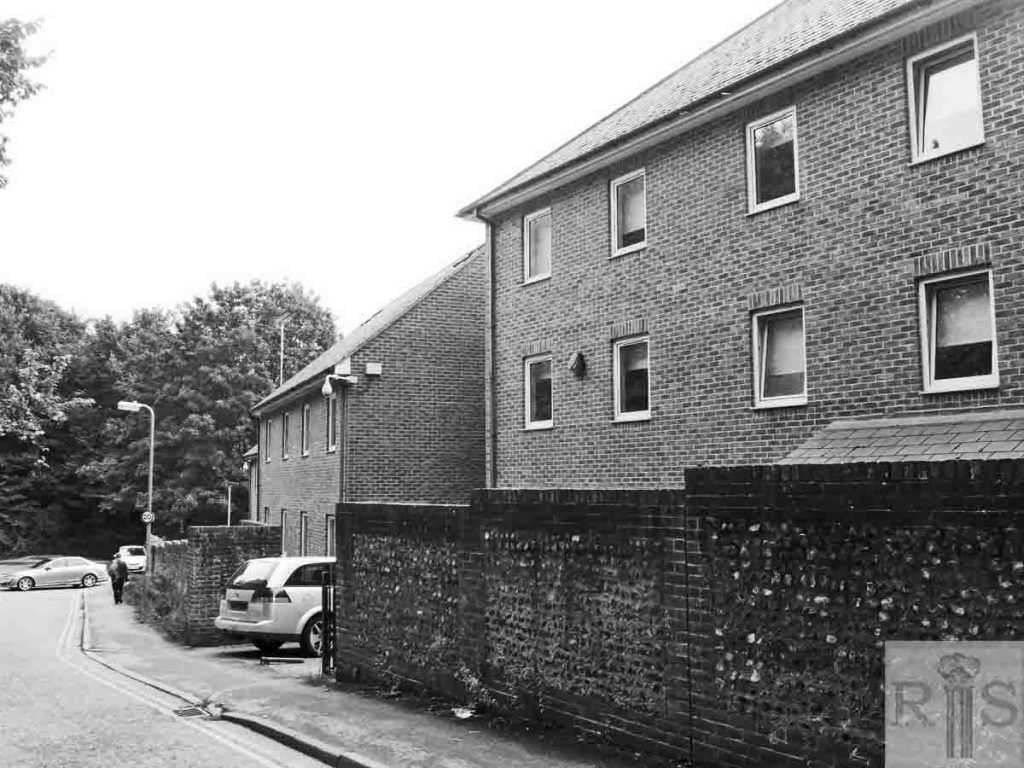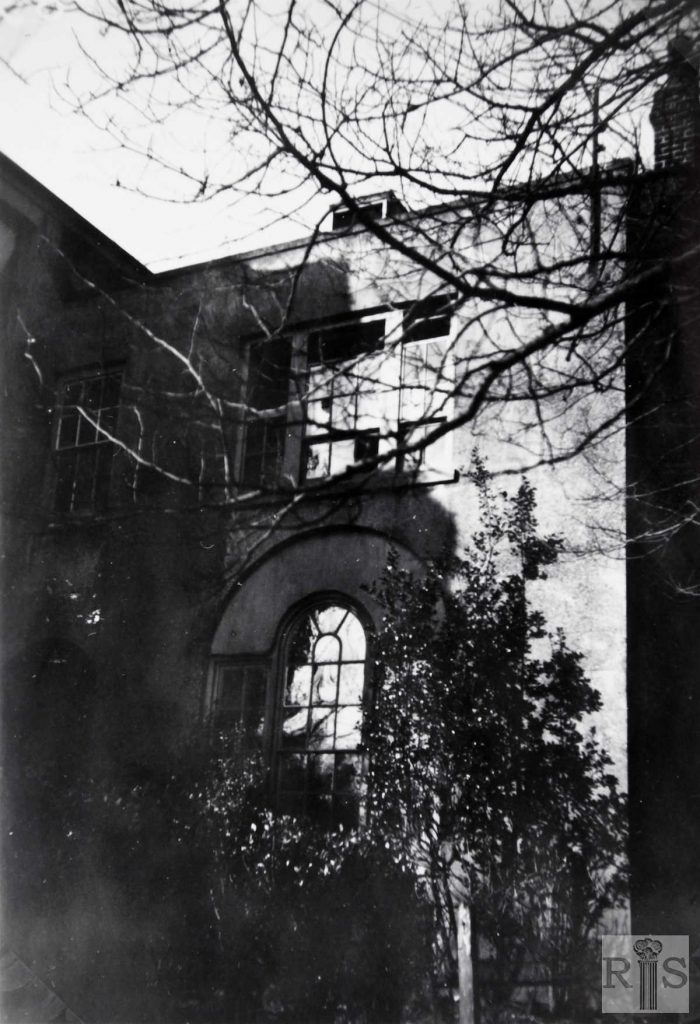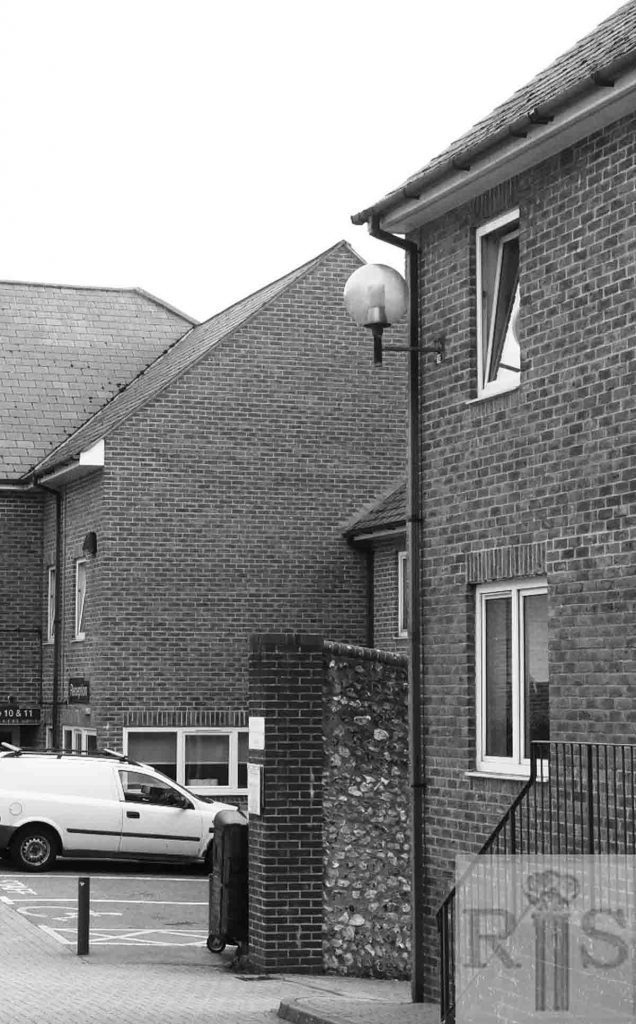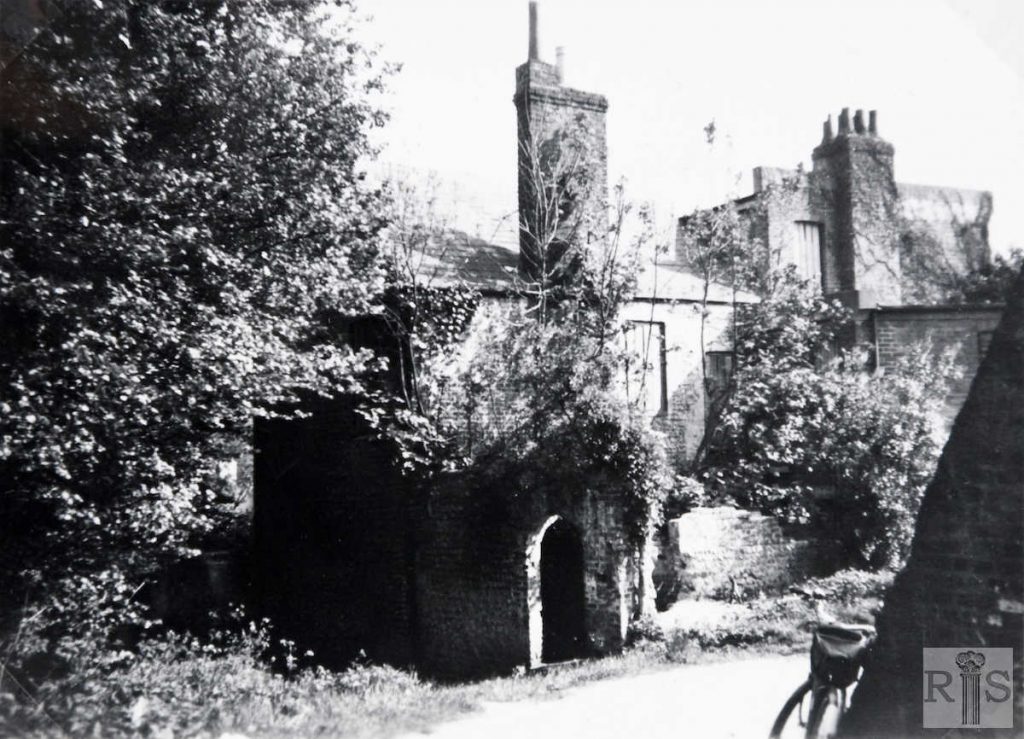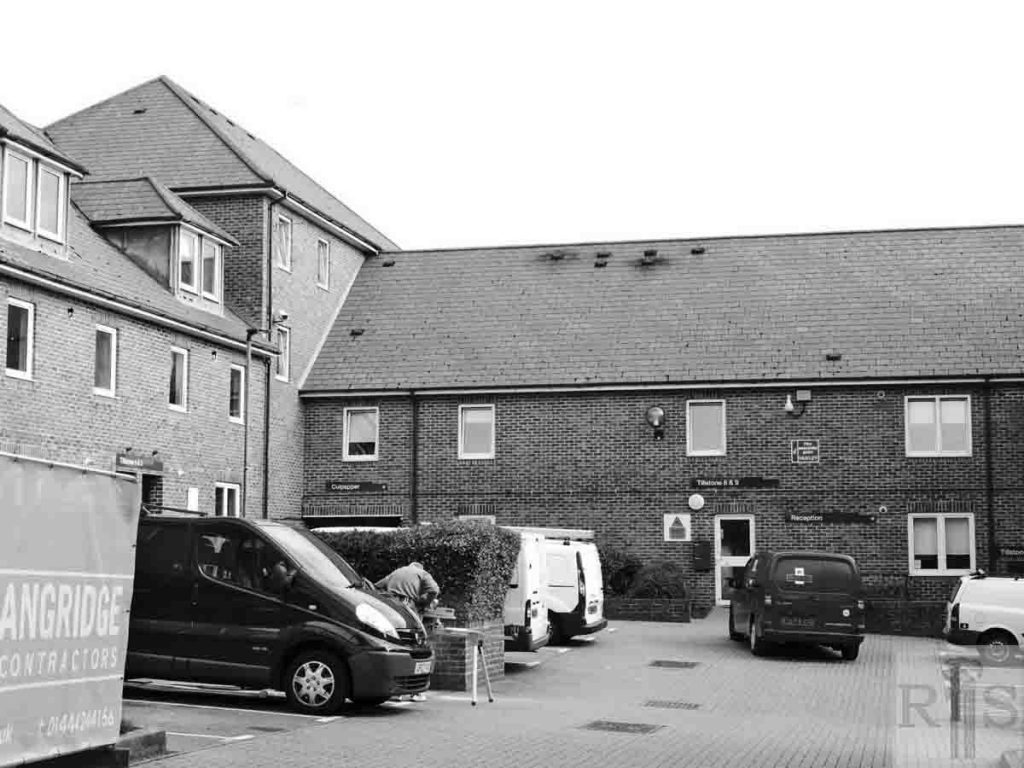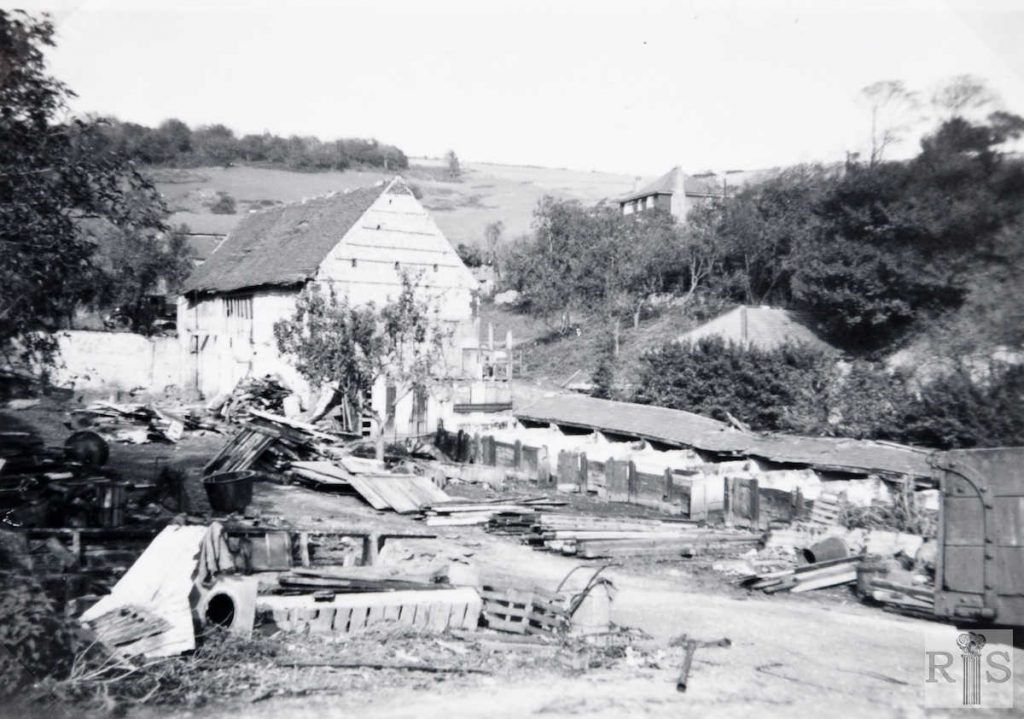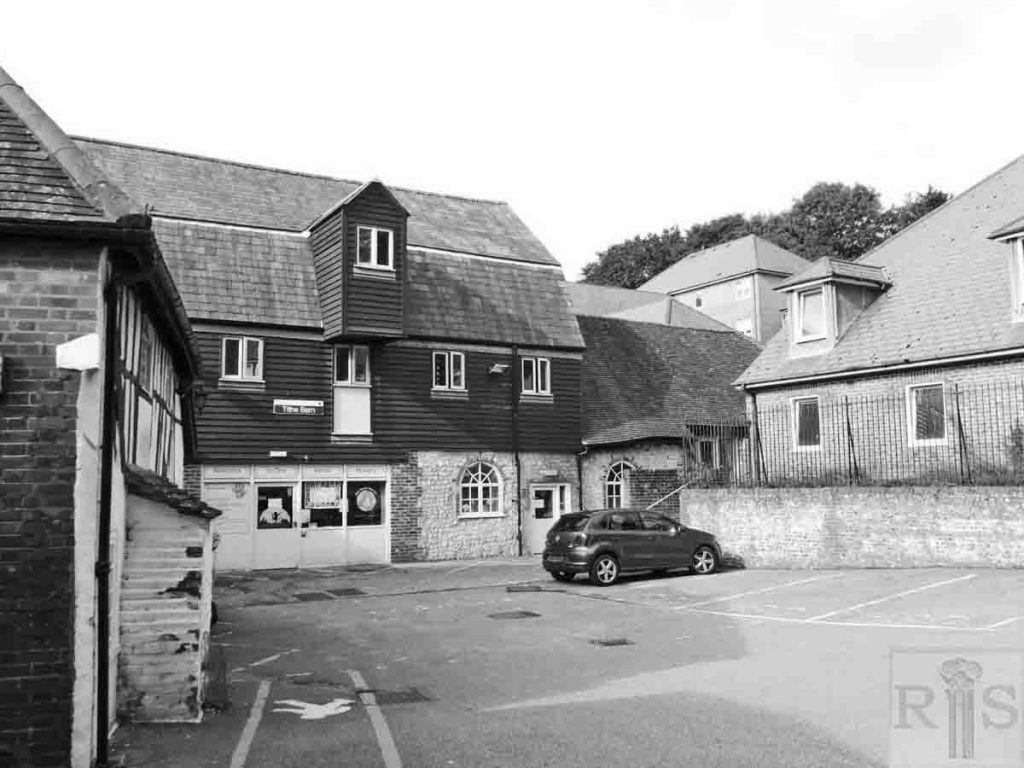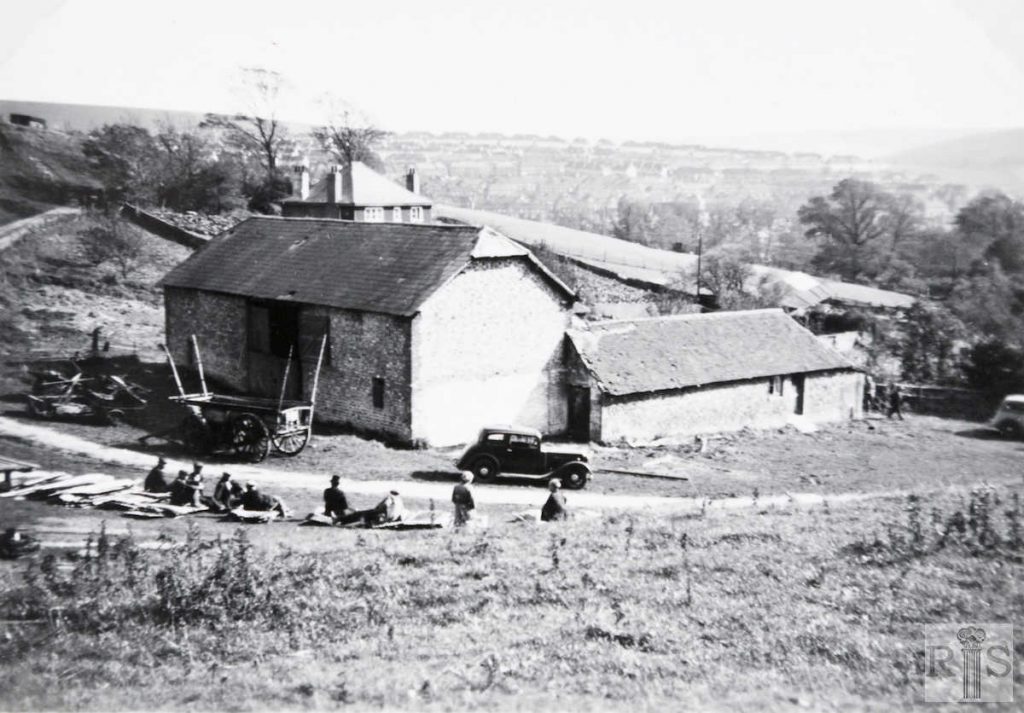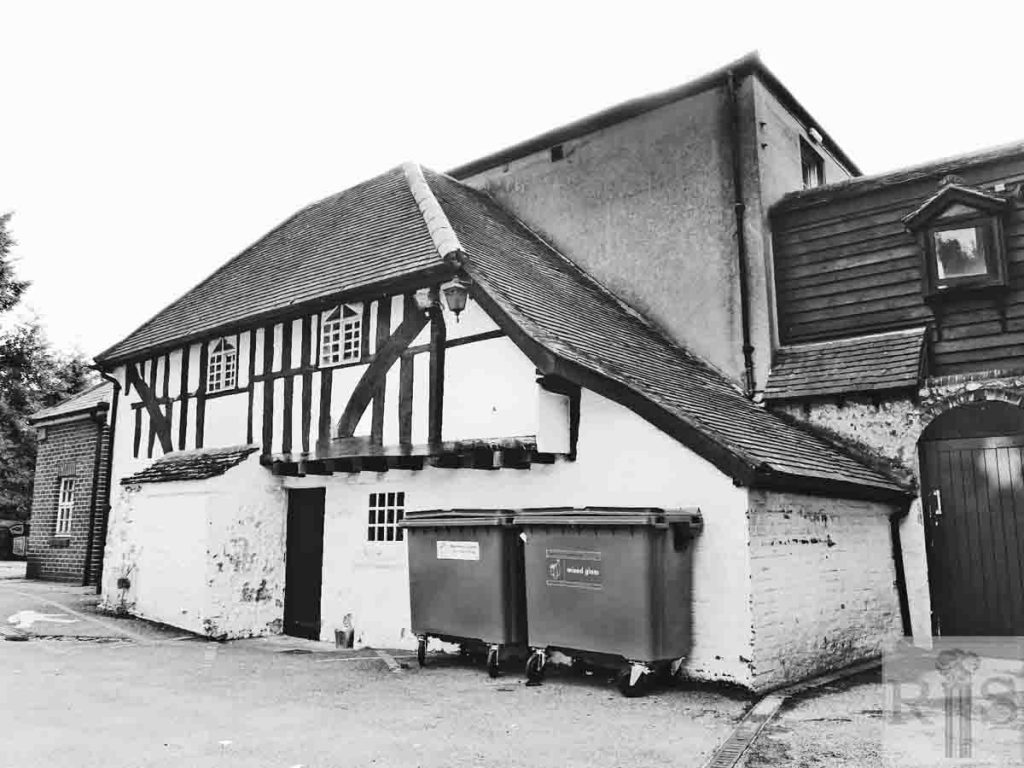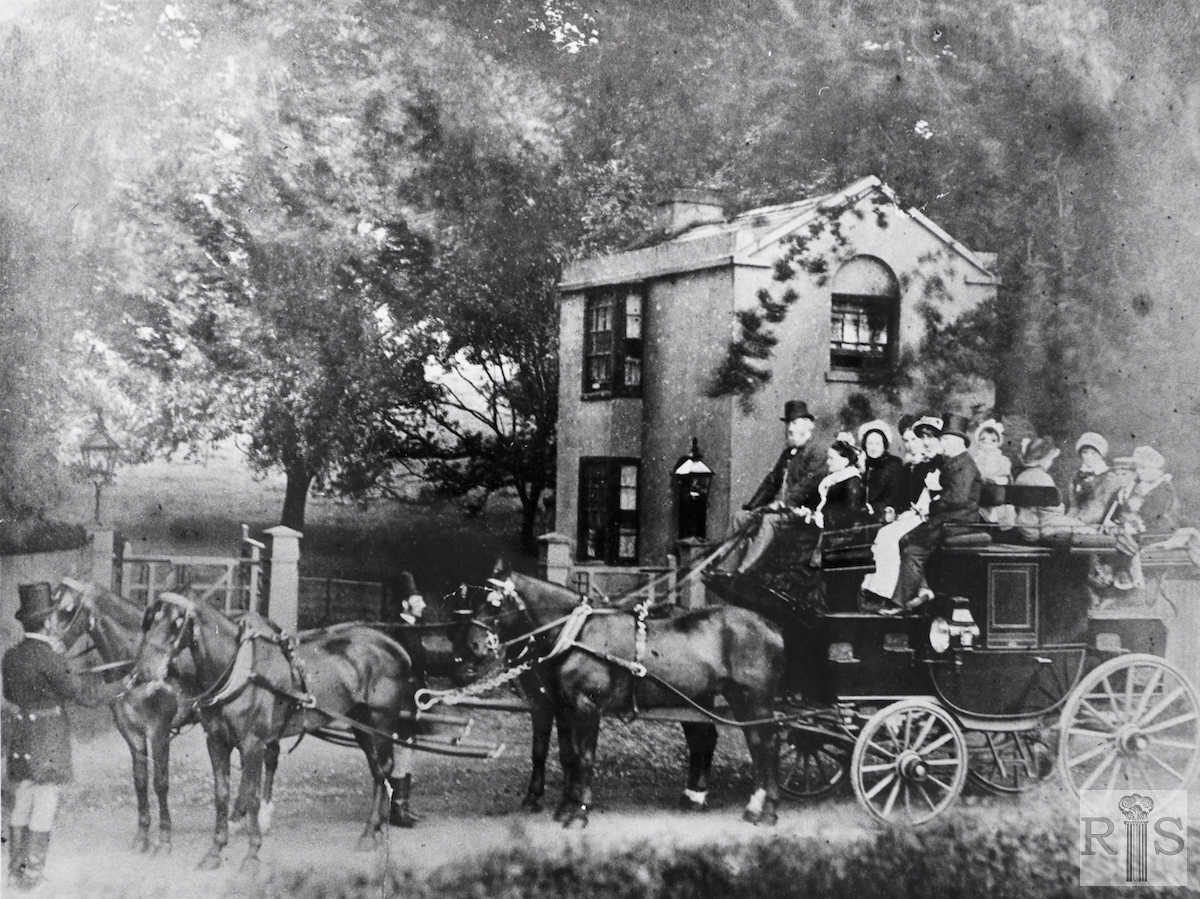
Moulsecoomb Place and Moulsecoomb Home Farm
James Gray: Two photographs joined to provide a panoramic view of the farm buildings and the Moulsecoomb area. They were taken from the hill to the south, in 1938, before the farm was broken up. Compare this view with the two 1889 photographs of Moulsecoomb [jgc_28_120 and 121] on the previous pages because several features appear in both, namely the long, low barn, the wall and the wooden gate though there is no sign of the pond in the later view. Note Moulsecoomb School, Hodshrove Farm and Moulsecoomb Way. The special school, Woodside, built here in 1956.
James Gray: For many years after the farm was broken up in 1938 the farmhouse lingered on. It was occupied throughout the 1940s and 1950s while the surrounding land was untended and unkempt. The area improved when the school was built but before long the house was empty and boarded up, as seen in these photographs of June 1963. It then provided a sorry contrast with the trim cottage seen in the panoramic view [jgc_28_129] on the previous page. It has now been demolished and the site is barren. jgc_28_130
James Gray: This house is of uncertain age. The rear of the house is said to date from the time of Queen Anne and there may still be earlier work. In the latter half of the 18th Century it came into the possession of Benjamin Tillstone, who in 1790 superimposed a façade of the ‘Georgian-Italian’ style. It remained in the Tillstone family until 1929 when Brighton Corporation acquired it. The greenhouse has been removed and a conservatory built out in front of the ground floor windows. See also the photographs [jgc_28_185] on the succeeding page. jgc_28_132
James Gray: Nothing can be seen of the main building other than the gate leading to the carriage drive but the crowded carriage is of some interest. The gentleman holding the reins was Benjamin Rogers-Tillstone, owner of Moulsecoomb Place. Behind is the Lodge which was taken over with the house by Brighton Corporation in 1929, after which it was let but finally demolished a few years ago. jgc_28_133
2018: The lodge was occupied until the late 1950s, when it was demolished to make way for the new Moulsecoomb library. (Photographer: Ron Fitton)
James Gray: Two photographs [see also jgc_28_135 below] of the ancient cottage, still to be found behind Moulsecoomb Place. This is without doubt the oldest house in Brighton, having been built between 1350 and 1400, though it has suffered many alterations and been re-roofed with slates. Slight differences can be seen between the two photographs. jgc_28_134
2018: This timber-framed hall house is now in use as a bar and social club. (Photographer: Ron Fitton)
James Gray: A view taken from the railway embankment in the summer of 1950, looking across the Lewes Road towards Bevendean Hospital. jgc_28_184
2018: The nearest that you can get to the original view from the railway embankment nowadays is standing on the footbridge at Moulsecoomb station. The view towards Moulsecoomb Place is now totally obscured by trees. (Photographer: Ron Fitton)
James Gray: These six photographs [jgc_28_123 to 128 inclusive] were taken in 1938, at the time when the farm was being broken up. The farmhouse and cottage lay behind Moulsecoomb Place, just to the east of the Brighton-Lewes railway line. Two views of the old cottage that adjoined the farmhouse and faced on to the narrow road which passed under the railway and led to the barns and farm buildings. jgc_28_123
2018: With the exception of parts of the old hall house and the tithe barn, all of the farm buildings have been demolished. (Photographer: Ron Fitton)
James Gray: These six photographs [jgc_28_123 to 128 inclusive] were taken in 1938, at the time when the farm was being broken up. The farmhouse and cottage lay behind Moulsecoomb Place, just to the east of the Brighton-Lewes railway line. View of the farmhouse. jgc_28_125
2018: See caption for jgc_28_123 above. (Photographer: Ron Fitton)
James Gray: These six photographs [jgc_28_123 to 128 inclusive] were taken in 1938, at the time when the farm was being broken up. The farmhouse and cottage lay behind Moulsecoomb Place, just to the east of the Brighton-Lewes railway line. The barns and farm buildings prior to the sale of the farm equipment and implements. jgc_28_127
2018: See caption for jgc_28_123 above. (Photographer: Ron Fitton)
